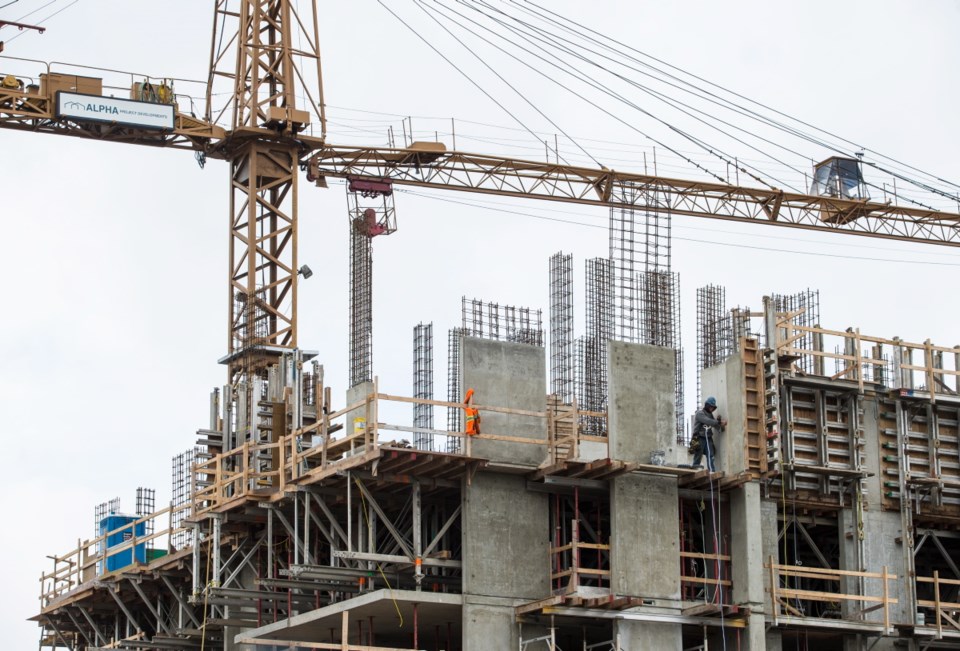The province expects a precipitous drop in housing starts this year and another slip in 2021, but housing experts warn that is no indication demand for housing has dropped off or that homebuilders are about to down tools any time soon.
Busy construction crews, housing supply in the midst of construction and delays in development approvals at the municipal level are among the factors at play in forecasts that suggest housing starts will fall to 35,021 this year in B.C. from 44,932 last year.
Budget documents released Tuesday showed starts are expected to slip to 32,040 in 2021 and 30,515 in 2022.
“When you talk about a dropoff, remember you’re talking about coming off a peak,” said Braden Batch, senior market analyst with Canada Mortgage and Housing Corp. “You’re still at pretty much record amounts of units being constructed at this moment.”
The historical average between 1990 and 2018 is just over 30,000 units annually in B.C.
In Victoria, CMHC has forecast a slight drop in starts this year from the 3,499 housing starts last year, which was also a drop from the 4,273 recorded in 2018.
This year, Victoria is likely to see anywhere between 2,341 and 3,768 new homes started, and between 2,723 and 4,099 in 2021.
Batch said most of the new starts in Victoria tend to be large developments of condos and rental apartments that require years to complete.
“So, often when we’re reporting on starts, it doesn’t reflect the amount of construction that’s present,” he said, adding there is only so much capacity in the construction industry to handle new projects. “And no one knows 100 per cent what the effect of all those new units on the market will be.
“Developers are cautious before they initiate new units.”
But Casey Edge said there’s more to a drop in starts than a lack of capacity to take on new jobs.
The executive director of the Victoria Residential Builders’ Association said the province and municipal governments have to shoulder some of the blame.
“We are seeing a decline in housing starts despite the fact we have very strong population growth,” he said. “We need to accommodate this with new housing not less housing.”
Edge said the province promised in 2017 it would improve the supply of housing and work on streamlining the approval processes at the municipal level.
“That hasn’t been done,” he said. “[The budget] predicts a 24 per cent decline in housing starts over two years, yet they are also predicting population growth. The demand for market housing is there, but they appear to be doing nothing about improving supply for that growing market demand.”
B.C.’s population is expected to grow by between 57,000 and 60,000 people each of the next four years, while Victoria’s population grows by about 5,000 people per year.
Edge concedes the province has worked to provide new non-market housing — the province claims it has just over 23,000 new units in progress or complete around the province — but he said it hasn’t dealt with the main supply issue.
“This is not a demand problem, this is a supply problem,” he said. “When you build market housing people leave their existing homes for new homes, or they buy up in the market. That leaves housing available.”
He said nothing has been done about streamlining approval and permitting processes for housing at the municipal level.
“And that’s because the B.C. government has no authority over municipalities,” he said.
“Three levels of government treat housing as a cash machine [GST, property transfer tax, development cost charges, fees and required amenities],” Edge said, noting because they can’t influence the processes of municipalities the “promises by the provincial and federal governments to increase supply and permit approvals are just a lot of hot air.”



